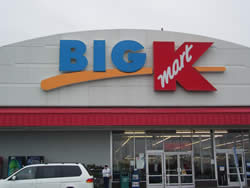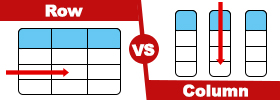Difference between Supermarket and Discount Store
Key Difference: Supermarkets are large self-service grocery stores that offer customers a variety of foods and household supplies. The merchandise is organized into an organized aisle format, where each aisle is numbered or labeled and has only similar goods placed together. Discount stores are retail stores that offer merchandise for a discounted price compared to high-end designer stores and department stores. Discount stores are a type of department stores that offer a wide assortment of goods, while others specialize in selected merchandise.
Supermarket and discount stores are two different types of shopping avenues. There are various different types of store formats that are available in the market and many of them overlap causing confusion for many people. Supermarket and discount stores are a part of people’s daily lives and are constantly visited, but many people properly explain the difference between the two. Supermarkets are self-service grocery stores that also stocks household supplies. Discounted stores are retail stores that offer merchandise at a cheaper price compared to department stores.
 Supermarkets are large self-service grocery stores that offer customers a variety of foods and household supplies. The merchandise is organized into an organized aisle format, where each aisle is numbered or labeled and has only similar goods placed together. The supermarket houses fresh foods, poultry as well as canned and boxed goods. Supermarkets are quite larger compared to traditional grocery stores, where people are available behind the counter to provide the consumer with goods and the consumer stands in front of the counter asking for the goods. However, supermarkets are smaller than hypermarkets or big-box markets, which are basically supermarkets combined with departmental stores.
Supermarkets are large self-service grocery stores that offer customers a variety of foods and household supplies. The merchandise is organized into an organized aisle format, where each aisle is numbered or labeled and has only similar goods placed together. The supermarket houses fresh foods, poultry as well as canned and boxed goods. Supermarkets are quite larger compared to traditional grocery stores, where people are available behind the counter to provide the consumer with goods and the consumer stands in front of the counter asking for the goods. However, supermarkets are smaller than hypermarkets or big-box markets, which are basically supermarkets combined with departmental stores.
Supermarkets have a special format where it allows consumers to pass through aisles using shopping carts or baskets and pick up whatever they require. Although, the early supermarkets did not house fresh grocery or meat, modern supermarkets have meats, poultry, bread, dairy products and fresh fruits and vegetables. In addition to fresh and canned food, supermarkets also keep household products such as cleaning supplies, baby goods, pet needs, medicine, kitchen appliances, crockery, etc. Supermarkets offer low prices and many deals or discounts on their products to attract consumers. Some even operate on negative profit margins sometimes to bring in customers. Supermarkets usually receive goods and merchandise in bulk from either manufacturers or large distributors in order to avail economies of scale. The profit margin is usually very small and the discounts are forwarded to the customers. Supermarkets may also be part of a huge chain system and may be closer to other supermarkets. Supermarkets closer together can save even more on costs by sharing distributors and slashing their transportation costs. Supermarkets are usually one-level brick and mortar store but may also include two floors depending on the amount of supplies that are kept.
The concept of an inexpensive food market that relies on discounts based on economies of scale was developed by Vincent Astor, who founded the Astor Market in 1915 but failed to be able to make a successful venture and shuttered it in 1917. The first self-service grocery store concept was developed by entrepreneur Clarence Saunders, who founded the Piggly Wiggly stores in 1916. The store become a financial success and become a franchise. Slowly, the concept started becoming popular all over the world, with many developed countries establishing their own self-service grocery stores. In the developing countries, self-service grocery stores are a recent phenomenon and have received only gained popularity in the last decade or so. Specifically in these countries, many supermarkets also offer loose or open merchandise similar to old grocery stores. People can measure our grains, rice and other staple products and buy it by weight. Supermarkets have also started offering ready-to-eat foods as a way to provide the customer to shop as well as eat at the same time. Some supermarkets may also have banks, ATMs, coffee bar, juice bar and anything else that may attract customers.
 Discount stores are retail stores that offer merchandise for a discounted price compared to high-end designer stores and department stores. Discount stores are a type of department stores that offer a wide assortment of goods, while others specialize in selected merchandise such as electronics, jewelry, office supplies, etc. Discounted stores offer many brand names compared to having just a single one. Some discount stores are parts of chains or franchises, while others are independently owned. Discount stores apply a high-volume, low-profit-margin strategy that allows them to offer merchandise as a lower rate compared to other stores in the closer vicinity. They may also make claims to offer the lowest price compared to any other stores that are near-by.
Discount stores are retail stores that offer merchandise for a discounted price compared to high-end designer stores and department stores. Discount stores are a type of department stores that offer a wide assortment of goods, while others specialize in selected merchandise such as electronics, jewelry, office supplies, etc. Discounted stores offer many brand names compared to having just a single one. Some discount stores are parts of chains or franchises, while others are independently owned. Discount stores apply a high-volume, low-profit-margin strategy that allows them to offer merchandise as a lower rate compared to other stores in the closer vicinity. They may also make claims to offer the lowest price compared to any other stores that are near-by.
The trend for discount stores became popular following World War II, when a number of retail stores realized that people could no longer afford to spend loads of money on certain merchandise. They opted for the high-volume, low-profit margin to try and draw in price-conscious consumers. Though discounted stores have now spread among many industrialized countries and is even become a huge trend in developing countries, the United States has become known as the leader of the discounted department stores. Discounted stores was at the height of popularity between the 1950s and the 1980s, when it more popular than the average supermarket. In 1962, three major retailers, Walmart, Kmart, and Target, opened their respective discount stores at their first locations. Other retailers also started establishing discount stores around the same time, while these three flourished and are still in existence, many of the others either folded or was sold to more thriving companies. Supercenters, hypermarkets are types of discounted stores.
Image Courtesy: guardian.co.uk, commons.wikimedia.org









Add new comment